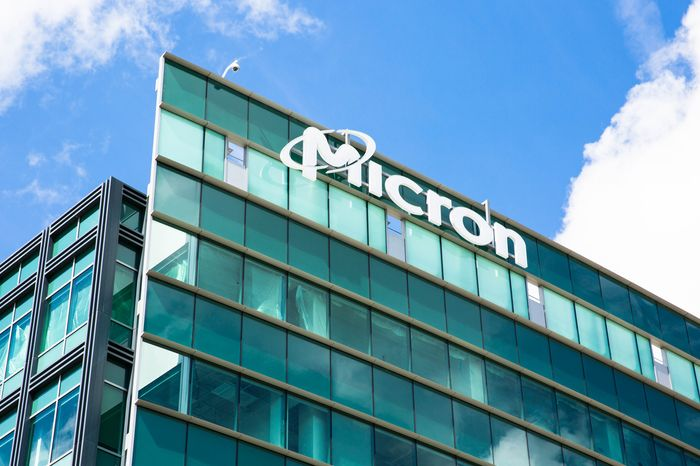After the biggest loss in the memory-chip company’s history and its worst gross margin since the dot-com bust, investors are betting that Micron has hit bottom

Micron Technology Inc. just reported its worst quarter in history, revealing more than $2 billion in losses in three months and its worst gross margin since the dot-com bust.
Yet when the extended trading session ended Tuesday, Micron shares were up 1.2%.
So what the heck just happened?
The answer to that may actually lie in just how bad the quarter was. As Citi Research analyst Christopher Danely pointed out ahead of the earnings report, the last time Micron’s gross margin was this bad — the chip maker spent more than $1.30 for every $1 worth of product it sold in the most recent quarter — it marked the bottom of a similar swoon during the 2008-’09 financial crisis.
The horrible numbers suggest that this could be the bottom again, and Micron executives leaned in to that message with their prepared remarks and discussions with analysts. Micron Chief Executive Sanjay Mehrotra said that inventory issues — which have taken flight as electronics manufacturers and other tech companies have stopped buying — “peaked” in the quarter, while taking a $1.43 billion write-down on inventory and predicting another $500 million will need to be written off in the current quarter.
“We are seeing that customer inventories are improving, while still elevated, but in aggregate, customer inventories are improving,” Mehrotra told analysts. “And we do expect that the volume of shipments both for DRAM [dynamic random access memory] and NAND [flash] will continue to increase on a sequential basis from here on.”
One of the most important comments from the Micron CEO was about the data-center segment, where Mehrotra said he expects to see revenue growth again in the next fiscal quarter and that customer inventories should reach “relatively healthy levels” by the end of the calendar year.
Micron did note that market conditions remain “extremely challenging” but that it expects DRAM and bit shipments will continue to increase, and supply demand balance will gradually improve for the rest of this calendar year.
The memory-chip maker said on the call that the underutilization of its factories was probably at the lowest levels in company history, which prompted one analyst to ask why they were still manufacturing product, if they were writing down such large quantities. Micron’s Chief Financial Officer Mark Murphy said that the company minimized the build of some of its products, which it can finish later, so that it can maximize the cash benefits of reducing some of its manufacturing.
ISI Evercore analyst C.J. Muse said that the report from Micron was “pretty much as expected,” which just shows that as bad as the earnings report was, Wall Street was prepared. Even so, some semiconductor-industry investors voiced their skepticism on Twitter about Micron executives’ upbeat tone as they reported such horrendous numbers.
Fred Hickey, editor of the High Tech Strategist, went on to note that a semiconductor-industry research company in Taiwan called TrendForce noted that average selling prices of DRAM dropped 20% in the first quarter and predicted ASPs will still fall another 10%-15%. Micron’s third-quarter guidance was not great, as it called for another negative gross margin and continuing losses, even as executives promised a turnaround was coming.
While Micron has proven to Wall Street in the past that it knows how to manage the ups and downs of a major semiconductor cycle, its commentary seemed disconnected with its results. Investors are betting on that commentary suggesting a strong rebound in the latter half of the year and into next year — but if Mehrotra & Co. are wrong about the bottom of the cycle, then the stock plunge they are currently avoiding will only return in even grander fashion then.
Comments